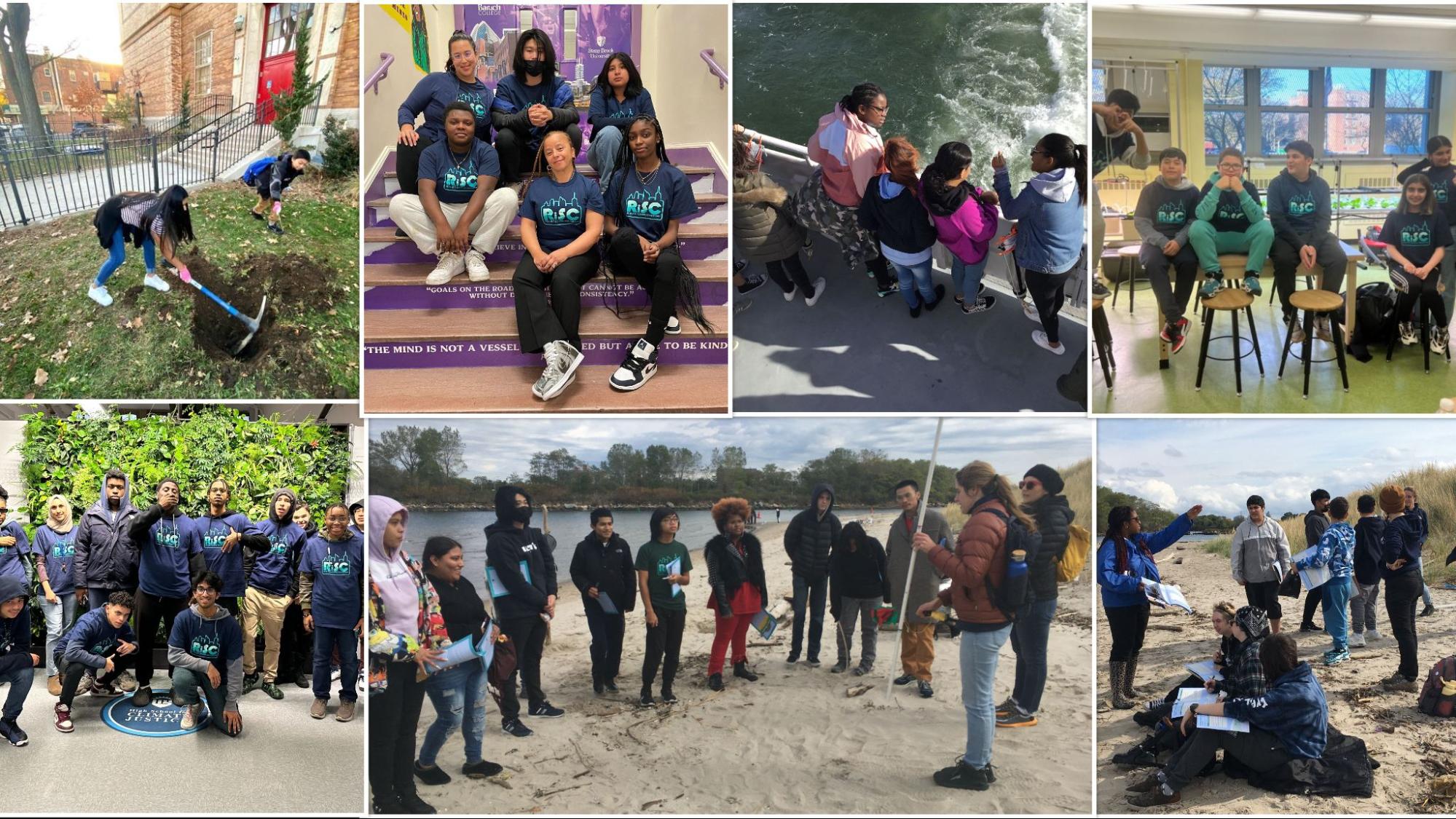Connecting Youth and Climate Resilience
A project led by the National Wildlife Federation empowers middle- and high-school students to participate in local climate resiliency efforts.
How can local communities best mitigate the impacts of climate change? What kinds of knowledge, skills, and tools do current and future generations need to become more resilient to the challenges posed by climate change? Increasingly, governments, scientists, and the public at large are becoming more and more aware of the critical role that children and young adults can play in reducing the various risks associated with climate change. In recognition of this, in recent years, a number of educational initiatives have been launched to equip youth with the tools needed to contribute to climate resilience efforts.
The Resilient Schools Consortium (RiSC)
One of these initiatives is the National Wildlife Federation's Resilient Schools Consortium (RiSC). In 2017, Brooklyn College, the National Wildlife Federation (NWF), and several New York–based partner organizations launched RiSC to deepen middle– and high–school students' understanding of climate change and to empower them to participate in climate resiliency efforts within their communities. The consortium was funded by both the Federal Emergency Management Agency (FEMA) and the National Oceanic and Atmospheric Administration's (NOAA) Environmental Literacy Program (ELP; Grant Award #NA20SEC0080005), and it works through a partnership with seven New York City public schools. Since 2019, the consortium has been led by the New York City chapter of NWF, and it works to craft curricula that help students understand and combat the inequitable ecological and social impacts of climate change within Coney Island—a coastal community projected to experience permanent flooding by 2080.

Evaluating RiSC
Knology has served as RiSC's external evaluator for this phase of the project since 2020. Our evaluation has centered on three questions:
- Did the curriculum enhance teachers' ability to educate students about the scientific, ecological, and social aspects of climate change?;
- Did students become more knowledgeable about climate change, and did the curriculum motivate them to become more involved in climate resiliency efforts within the broader Coney Island community?; and
- Did the process of developing and implementing the curriculum strengthen ties between teachers and community partners?
To answer these questions, we conducted in–depth interviews with teachers and community partners, while also reviewing samples of publicly available student work.
Analysis of this data shows that RiSC is an effective program—one that can help current and future generations acquire the knowledge, skills, and tools needed to improve climate resiliency within their communities. Conversations with teachers and community partners showed that RiSC improved their knowledge of a variety of different climate–related topics, gave them useful strategies and resources for promoting awareness of climate change and its local impacts, and showed them how to help students contribute to climate action efforts. Our review of students' work confirmed that the program gave them a more in–depth understanding of the scientific, environmental, and social dimensions of climate change, while also equipping them with the knowledge needed for effective civic engagement. Beyond this, the program facilitated growth in students' critical thinking, problem solving, public speaking, and leadership skills. Teachers and community partners agreed that RiSC had furthered students' commitments to climate justice, and that the curriculum offers a model that can be implemented in any part of the country confronting climate–related risks and threats.
Interested in learning more about RiSC and its work? Click the link at the top of the page to read our summative evaluation of the program.
About this Article
This material is based upon work supported by the National Oceanic and Atmospheric Administration under Grant No. NA20SEC0080005, and by numerous grants from the Federal Emergency Management Agency (EMN-2022-CA-00018 (2022-23), EMN-2021-CA-00011 (2021-22) and EMN-2020-CA-00006 (2020-21). Any opinions, findings, and conclusions or recommendations expressed in this material are those of the authors and do not necessarily reflect the views of the National Oceanic and Atmospheric Administration, the Federal Emergency Management Agency, or the Department of Homeland Security.
Photo by Teri Brennan